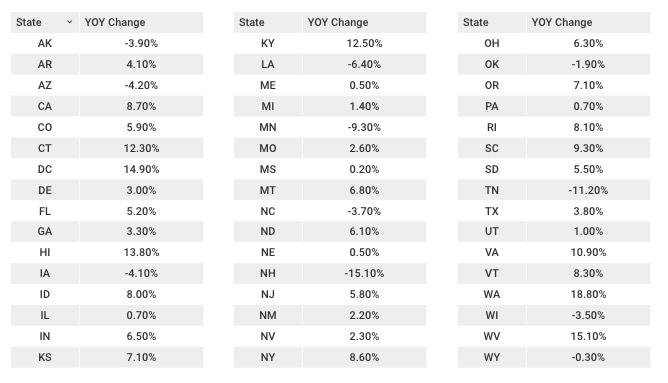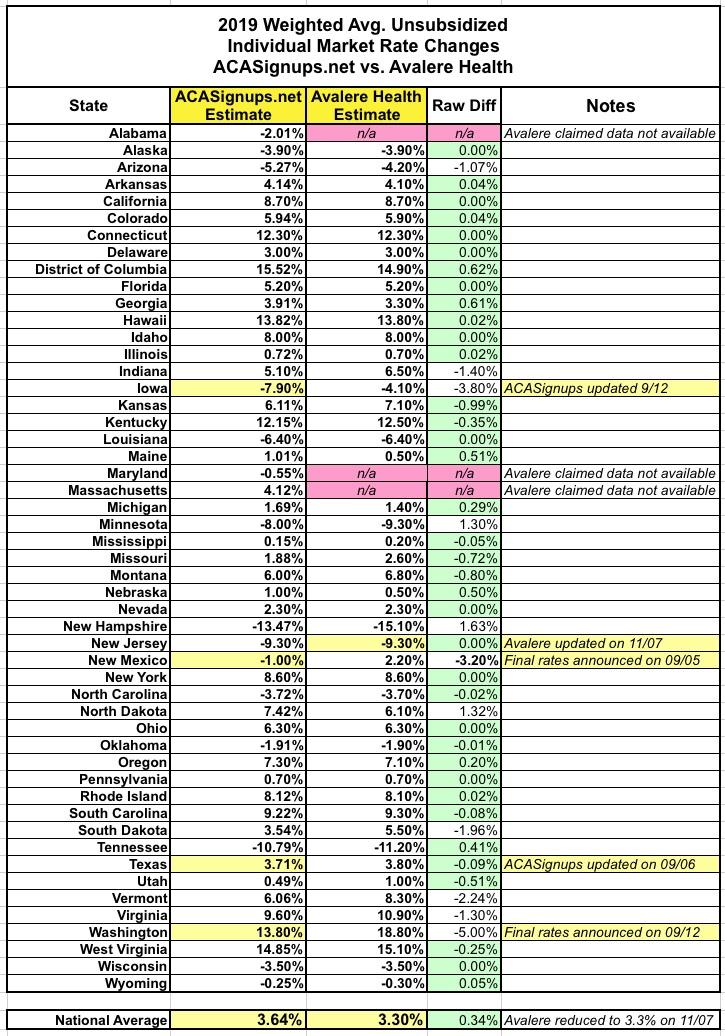Let's Get Ready To Rumble: ACASignups.net vs. Avalere Health
Last Friday I went on a bit of a rant, irritated about the "EXCLUSIVE!" label slapped on a story from the AP in which they "broke" the news that I've been reporting on here at ACASignups.net for several months: That ACA-compliant individual market healthcare policy premiums are only going up around 3-4% on average next year. I found it even more noteworthy that the AP's analysis (which was actually done for them by the Avalere Health consulting firm) matched up with my own analysis almost perfectly:
- AP/Avalere stated that 2018 rates went up "about 30%"...I had projected it at 29.5% last fall. When the dust settled, it was actually 27.9%.
- AP/Avalere stated 2018 premiums average "nearly $600/month"...which is exactly what I had estimated it at back in April.
- AP/Avalere stated that premiums will either drop or increase by less than 10% in 41 states; I pegged it at 42 states (including 1 state AP/Avalere didn't analyze)
- AP/Avalere stated that 11 states will see an average rate drop...I pegged it at 13 states, including 2 which the AP/Avalere didn't analyze.
- AP/Avalere stated that 6 other states + DC will see an average rate increase of 10-18%...as had I.
- Finally, the key data point: AP/Avalere stated the national avg. 2019 increase will be 3.6%...vs. my 3.69% estimate as of three weeks ago.
Well, today I discovered that our findings are even more in line with each other than that. The original AP story doesn't go into a state-by-state breakout of Avalere's findings...but this related AZCentral article does just that:
With this in mind, I've plugged in both Avalere's estimates and my own side by side to see how they compare. The table below includes a few updates since last week:
- I've updated both New Mexico and Texas, bumping my national average up from 3.69% to 3.81%
- Avalere has updated New Jersey, bringing their estimate down from 3.6% to 3.3%
UPDATE 7:30pm: Two more updates...
- Washington State announced their final/approved rate changes, although only for 7 of the 11 carriers (the other 4 have requested changes only)
- Thanks to a tip, I was able to lock in Iowa's actual requested rate filing, which is substantially lower than I previously pegged it at. This makes much of the Iowa section below moot.
With all of this in mind, here's how our estimates line up:
As you can see, they're either identical or off by less than 1 percentage point in 37 states...and Avalere didn't even run an analysis in three others, for reasons unknown (at least partial data for Alabama, Maryland and Massachusetts has been available for over a month, so I'm not sure what their rationale was).
In the 11 states where there's more than a 1-point variance, it's less than 2 points in 7 of them. That leaves just Iowa, New Mexico Vermont and Washington State where there's more than a 2 point difference.
New Mexico and Washington have simple explanations: I've updated my estimate, Avalere Health hasn't done so yet. Vermont is only off by 2.2 points.
Really, of all 50 states +DC, Iowa is the only state where there's a significant discrepancy which I don't have an explanation for. Medica is the only carrier offering ACA policies this year and next (Wellmark is supposedly re-entering the market in 2019, but since they aren't there this year there's no current premiums to measure against year over year).
Medica announced back in June that they're raising premiums "less than 5.6%" on average, which I took to mean perhaps 3.0% at the time. Unfortunately, I don't have access to their actual average rate change, requested or approved; I don't see their filings in the SERFF database, and over at RateReview.HealthCare.Gov they have three listings ranging from a 16.5% decrease to a 4.7% increase...but the filings themselves are redacted, so I have no way of knowing what the relative market share of each is. I presume Avalere Health was able to acquire the unredacted version of their filings (or simply managed to get someone at Medica to tell them the weighted average).
UPDATE: As noted above, I've been able to resolve the Iowa mystery after all thanks to a tip from a commenter below!
Anyway, both of our estimates will likely inch their way up or down slightly as more final, approved rate change data comes in from the rest of the states, but it's safe to say that the national average will be somewhere between 3-4%.
Of course, even that assumes that every single current enrollee renews their current policy, which never happens. Some will drop out, some new people will sign up, many will either upgrade or downgrade to a different metal level, and many will switch from their current carrier to a different one...which means that the actual average 2019 premium change will end up being a few points off from either Avalere or my estimates next spring.
How to support my healthcare wonkery:
1. Donate via ActBlue or PayPal
2. Subscribe via Substack.
3. Subscribe via Patreon.






